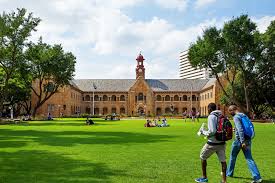University of Pretoria: ‘Yakhal’ Inkomo’ exhibition to open at Javett-UP as part of Bongi Dhlomo collection
On 26 March 2022, the Javett Art Centre at the University of Pretoria (Javett-UP) will open the much-anticipated Yakhal’ Inkomo exhibition, the first curatorial iteration from the Bongi Dhlomo collection.
The exhibition, which will run until 15 January 2023, is guest-curated by Tumelo Mosaka along with Sipho Mndanda and Phumzile Nombuso Twala and will be at the heart of Javett-UP’s 2022 education mediation and public engagement programming.
Yakhal’ Inkomo aims to incite, inspire and sustain new engagement with various creative forms that are at the heart of articulating a raw and truthful experience of apartheid. The exhibition will be accompanied by an extensive educational and public engagement programme at Javett-UP, online and at various locations around Gauteng. It will feature film screenings, conversations, workshops and performances.
The Bongi Dhlomo collection features pieces by some of the most important artists working in South Africa between 1960 and 1990. The works were collected between 2017 and 2019 by artist and curator Bongi Dhlomo on behalf of the Javett Foundation, and is a unique, educative assemblage of more than 100 classical 20th-century artworks produced by black artists in South Africa.
These diverse pieces provide aesthetic glimpses into the personal and collective experiences of South Africans during the tumultuous 20th century. The collection was formed to facilitate meaningful dialogue between contemporary audiences and the country’s recent history.
Inspired by Dhlomo’s passion and activism in the arts and for black artists, lead curator Mosaka sought to understand what this specific period meant for Dhlomo and black artists in general, across all genres. Both the exhibition concept and title arose out of these conversations.
“I started asking what was at risk and who the art was for,” Mosaka says. “What were the conversations happening among them as creative beings? There are shifts and changes depending on the decade, and when one looks at the work, even though there are familiar tropes, such as ‘township art’, there are nuances that open doors, and questions that exist and have not been dealt with.”
Yakhal’ Inkomo translates as “bellowing bull” and is borrowed from saxophonist and composer Winston Mankunku Ngozi’s 1968 jazz masterpiece of the same name. In the song, the “bull” is crying to be rescued from slaughter and represents black people’s victimhood under apartheid. The musical composition captured the sound and cries that were not permitted, instead expressing the mood and feeling of suffering through the rhythms and sound of the horn. The bellowing bull cannot be silenced.
For the exhibition, Mosaka drew on the metaphor of a bull to characterise this time and thematic content. The bull is steeped in symbolism in Africa; it embodies strength, hope, material wealth, resilience and spiritual connection. Drawing from both the collection and other artistic expressions from the same period, Mosaka sought out conceptual linkages that address how physical and imagined realities offered opportunities for artists to explore their subjective positions under apartheid.
The works will be arranged around the concepts of alienation, nostalgia, mobility and spirituality, taking a thematic rather than a chronological approach. However, notable touchpoints such as the 1960 Sharpeville massacre and 1976 Soweto uprising will be highlighted to demonstrate the creative and sensory experiences that were produced in response to these traumatic events.
“Winston Mankunku’s song arose out of an apartheid-inflicted trauma on a black body,” Javett-UP CEO Lekgetho Makola says. “It was in response to the continuing erosion of human dignity during his time. We are now three decades into a liberated, democratic society, within which the manifestation of trauma is still prevalent to the same body in particular. This is an irony of post-apartheid South African society. The curatorial concept and process begin to respond to this persisting trauma via creative artistic processes. It calls for revisiting our histories to learn anew how to use culture to confront corrupted power.”

